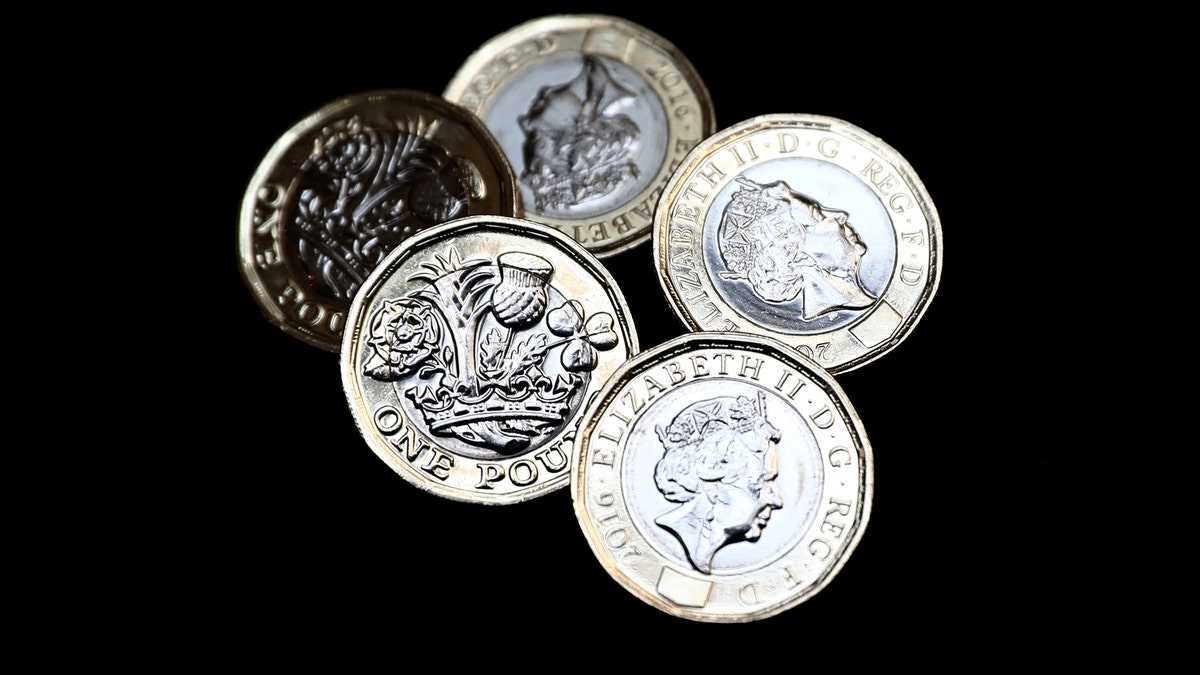
File photo - New one pound coins, which come into circulation today, are seen in London, Britain March 28, 2017 (REUTERS/Neil Hall).
The U.K.’s Royal Mint has released what it describes as the “most secure coin in the world.” The bimetallic £1 coin, which entered into circulation Tuesday, boasts a hologram-style image, micro lettering and a “hidden security feature” designed to beat counterfeiters.
A spokeswoman for the Royal Mint told Fox News that the coin’s 12-sided shape and the fact that it is made from two metals make it difficult to counterfeit. The “latent” hologram-style image on the coin changes from a “£” symbol to the number “1” when the coin is viewed from different angles, she added, via email.
Micro-lettering is another feature of the coin designed to foil counterfeiters – there is very small lettering on the lower inside rim of both sides of the coin.
THE U.K.'S FIRST-EVER 'PLASTIC' 5 BILL HAS REALLY UPSET VEGANS
The coin replaces the existing $1 coin. Approximately one in 30 £1 coins in circulation is a counterfeit, according to the Royal Mint.
“For as long as coins have been struck, since the 7th century BC, people have attempted to copy them, and the old £1 is no exception,” explained Dominic Chorney, a numismatist at London-based coin expert Baldwin’s. “In an attempt to counter this, the new £1 coin has been piled with a number of tricks to make it very difficult to counterfeit.”
Mark O’Byrne, research director at gold broker GoldCore agrees that the new coin will be a valuable weapon in the battle against forgers. “The coin's many anti-counterfeiting features are interesting and they sound like they will be quite effective,” he explained, via email. “High quality forgeries can be made of most coins these days but it will be very expensive for forgers to try and mint such high quality coins that will fool the authorities.”
ELON MUSK’S NEURALINK WILL CONNECT OUR BRAINS TO COMPUTERS
As for the hidden security feature, the Royal Mint told Fox News that the coin contains a “strong electro-magnetic signature, used by the vending industry to authenticate a real coin.”
However, specific details on the electronic-magnetic signature have not been revealed. The BBC reports that this may be a material within the coin that can be detected by electronic scanners in coin-counting or payment machines.
“This likely involves radio-frequency identification (RFID) technology which uses electromagnetic fields to automatically identify and track objects including coins which have been tagged,” added O’Byrne of GoldCore. “The tags contain electronically stored information.”
FOR THE LATEST TECH FEATURES FOLLOW FOX NEWS TECH ON FACEBOOK
O’Byrne noted reports that the coin contains Integrated Secure Identification Systems (iSIS) technology that was previously only available in paper bank notes. “It is believed that the iSIS technology can be inserted as a physical security layer within each coin,” he wrote. “This means that thousands of coins could be scanned and verified for authenticity within seconds.”
The U.K. is earning a reputation for innovation in currency technology. Last year the country introduced a new, highly durable “plastic” £5 bill, its first ever bill made from polymer. The bill, however, upset vegans when the Bank of England confirmed that it contains traces of animal fat in the form of tallow.
Follow James Rogers on Twitter @jamesjrogers
